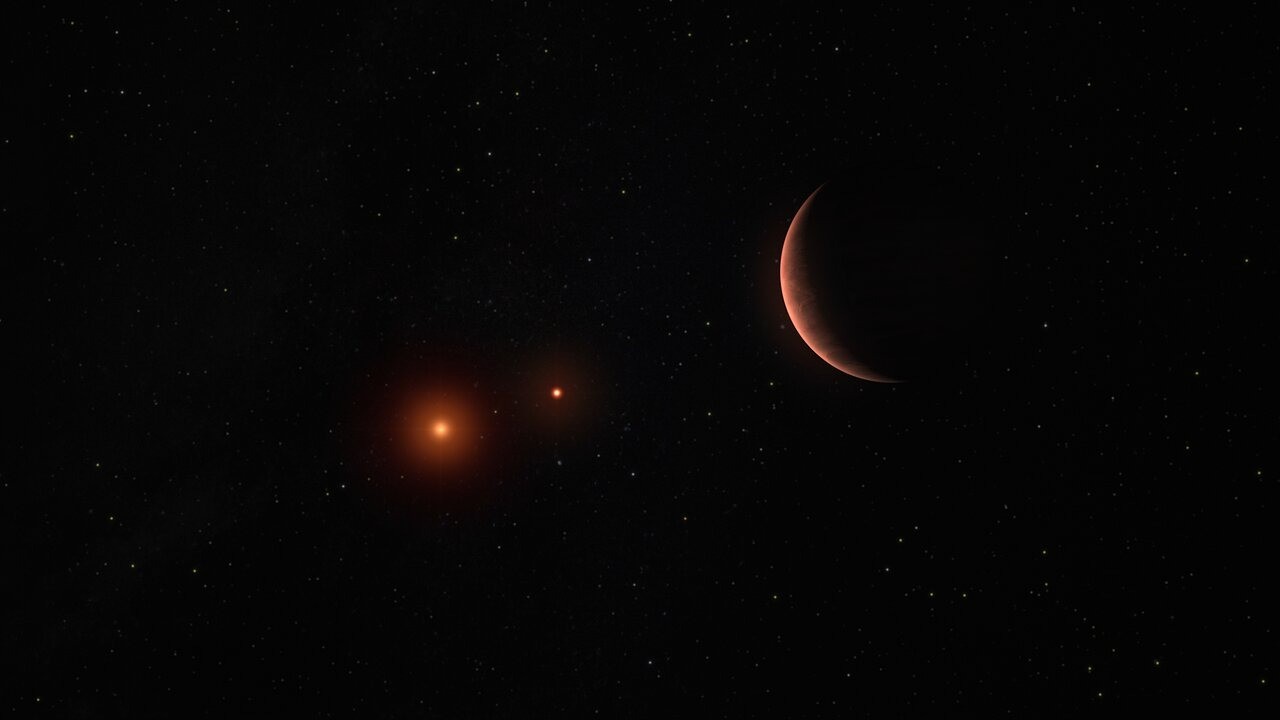On Mars, Life Could Be Hiding Under the Rocks

Living on Mars would be tough by any measure — so tough, that there's considerable debate about whether even the hardiest of microbes could survive. The atmosphere is thin, the surface is baked with radiation and the planet itself is mostly arid, dusty and wind-swept.
But there could be niches where life thrived in the distant past, when Mars had a thicker atmosphere and a wetter surface. So when Red Planet scientist Janice Bishop was invited to look at carbonate rocks in the Mojave Desert a few years ago, she immediately saw implications for Mars.
Bishop had already published a 2006 International Journal of Astrobiology paper calling iron oxides an "ultraviolet sunscreen" for ancient photosynthesis on Earth. The result of the newer study, published in 2011 in the same journal showed that the Mojave rocks collected also had iron oxide coatings, under which carbonates were hiding.
"They were all hiding under this red mineral at the top, called hematite," Bishop told Seeker in an interview. Hematite is also a common element on Mars.
RELATED: Mars Water: Follow the Toxic Stream to Find Alien Life
Besides being senior research scientist and chair of the astrobiology group at the SETI Institute, Bishop is known for her work creating an instrument on the Mars Reconnaissance Orbiter called CRISM (Compact Reconnaissance Imaging Spectrometer). The spacecraft has been taking high-resolution pictures and spectroscopic images of Mars for more than a decade, providing reams of information on how the surface looks like today and how it may have evolved.
And Bishop is one of several scientists working on the "sunscreen" idea. The University of Maryland's Gozen Ertem, for example, is looking at how well biomolecules can hide from ultraviolet radiation in different mixtures. She will present on her research at the American Association for the Advancement of Science Conference next month. (Ertem did not respond to requests for an interview.)
Get the Space.com Newsletter
Breaking space news, the latest updates on rocket launches, skywatching events and more!
It's unclear how well Martian microbes (if they existed) would have fared in their environment, but at the least the studies on iron oxides are yielding valuable information about how life evolved on Earth. This could help scientists better understand the possibility of life in other environments across the solar system, or even exoplanetary systems.

Some people in this field are trying to figure out how microbes could have evolved when the Earth had no protective ozone layer, similar to what is on Mars today. A 2015 Geology paper led by Tina Gauger at the University of Tubingen suggests that some strains of bacteria could have created iron oxide layers in their environment for protection.
RELATED: Has Curiosity Found Fossilized Life on Mars?
The role of microbes depositing iron oxide has also been explored extensively by Kurt Konhauser, who is with the department of Earth and atmospheric sciences at the University of Alberta. Besides being co-author of the 2015 paper, Konhauser has authored or co-authored multiple other papers looking at the ancient iron cycle, how quickly microbes could generate ferric oxide in different environments, and the role of photoplankton in transfering phosphorous to the sea floor.
But would this process be enough to save a Martian microbe today? Bishop says she believes there were microbes in the distant past, but in the arid Red Planet environment today, "It's kind of a stretch."
However, she added, other researchers think that life could persist in briny water environments on the planet, such as recurring slope lineae that occur seasonally in craters and other sloped locations on Mars.
WATCH VIDEO: Are We Sabotaging Our Search For Life On Mars?
Originally published on Seeker.
Join our Space Forums to keep talking space on the latest missions, night sky and more! And if you have a news tip, correction or comment, let us know at: community@space.com.

Elizabeth Howell (she/her), Ph.D., was a staff writer in the spaceflight channel between 2022 and 2024 specializing in Canadian space news. She was contributing writer for Space.com for 10 years from 2012 to 2024. Elizabeth's reporting includes multiple exclusives with the White House, leading world coverage about a lost-and-found space tomato on the International Space Station, witnessing five human spaceflight launches on two continents, flying parabolic, working inside a spacesuit, and participating in a simulated Mars mission. Her latest book, "Why Am I Taller?" (ECW Press, 2022) is co-written with astronaut Dave Williams.









